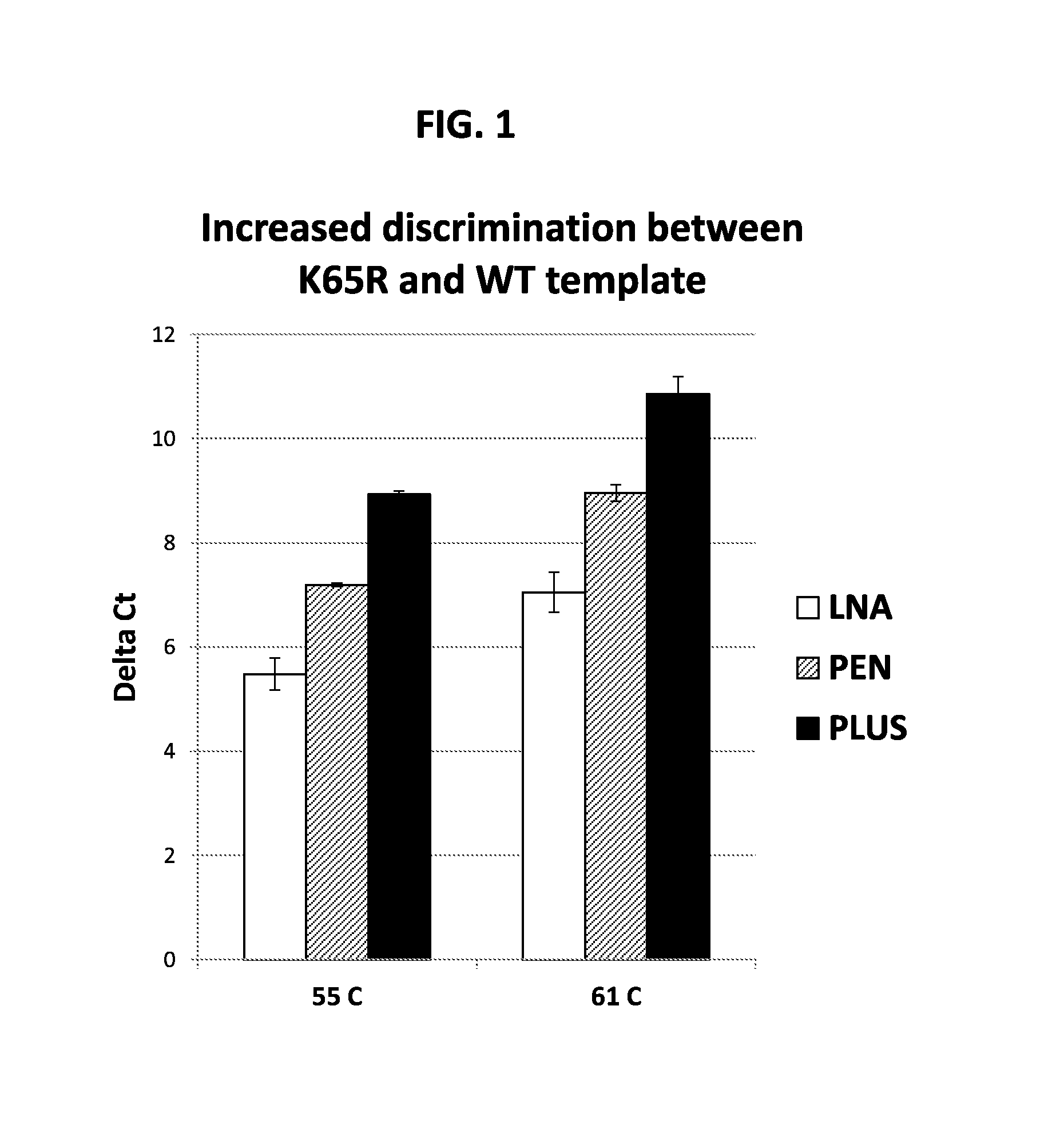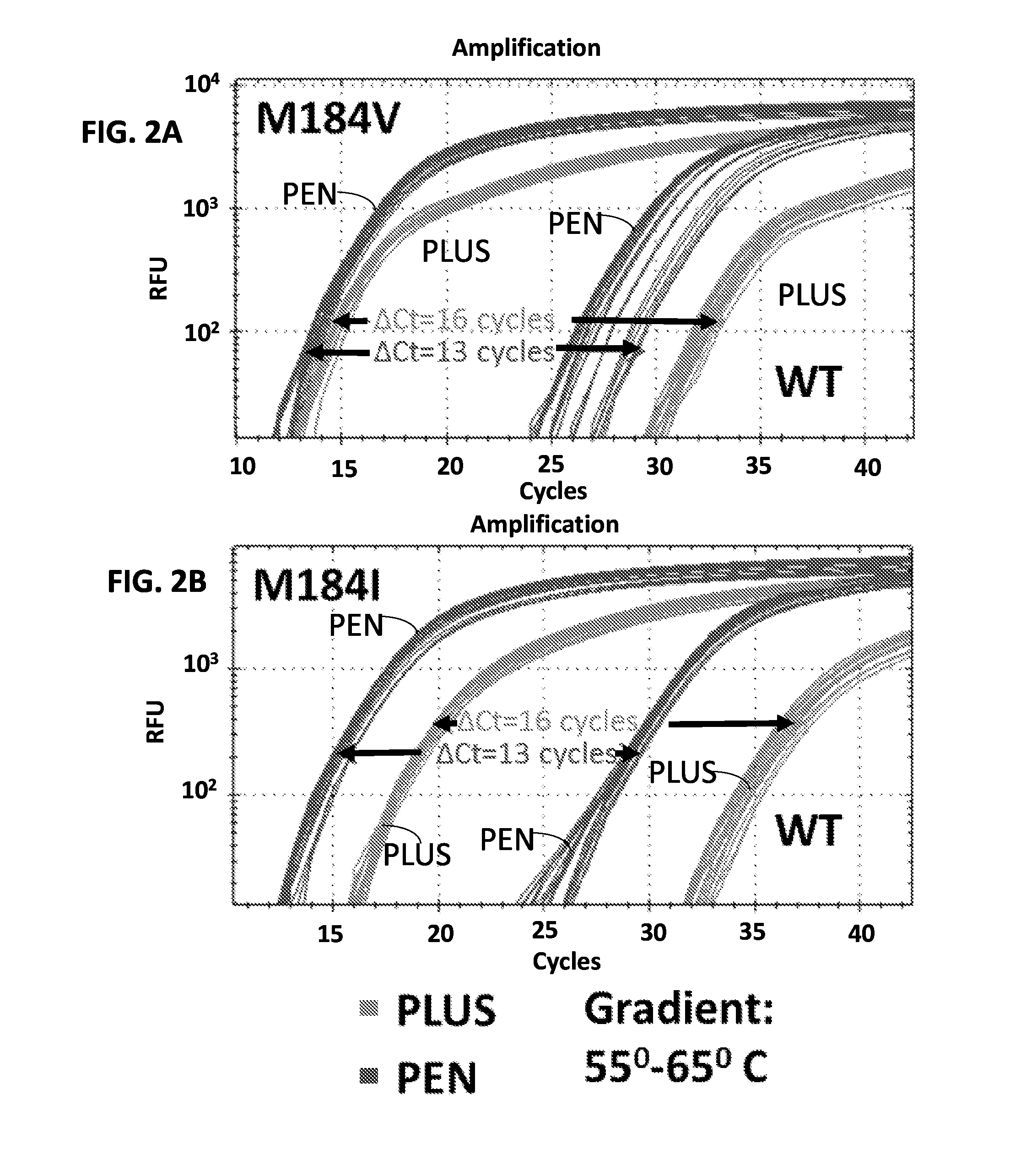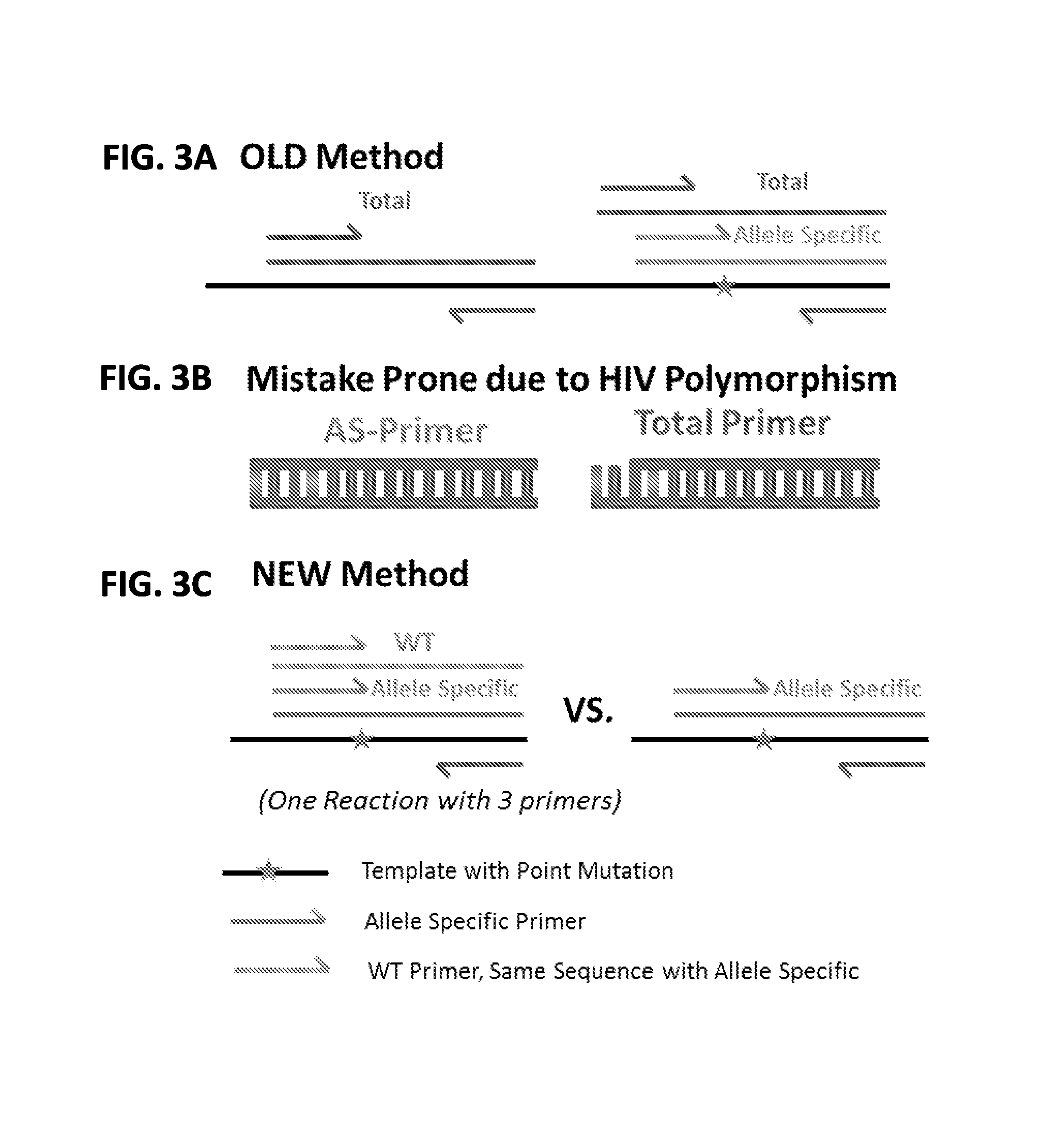Allele specific PCR assay for detection of nucleotide variants
a nucleotide variant and allele specific technology, applied in the field of detecting minor or major genomic variants in a polymorphic, can solve the problems of poor clinical treatment outcomes, lack of sensitivity to detect low-frequency drug-resistant variants, limited routine use of them, etc., to achieve low false positive results, increase sensitivity, and low background noise
- Summary
- Abstract
- Description
- Claims
- Application Information
AI Technical Summary
Benefits of technology
Problems solved by technology
Method used
Image
Examples
example 1
Allele Specific PCR Assay for the Detection of HIV-1 Minor Variants and Linked Drug Resistance Mutations
[0156]This example illustrates a novel Allele-Specific PCR (ASPCR) assay that provides improved specificity and sensitivity compared to known assays for detecting variations in a target nucleic acid sequence. Standard ASPCR serves as a good alternative to standard genotypic and phenotypic HIV-Drug Resistance (HIVDR) assays, addressing limitations associated with these assays, such as low sensitivity and high cost. Even though ASPCR is used in research settings, routine use in the clinic has been precluded due to issues associated with: demand of high stringency conditions, vulnerability to HIV polymorphism, PCR artifacts, and detection of one mutation at a time. This example describes an improved ASPCR assay that addresses the above issues. Using primers that carry both a penultimate mismatch and a 3′ Locked Nucleic Acid (LNA), the discriminatory power of ASPCR between mutant and ...
PUM
| Property | Measurement | Unit |
|---|---|---|
| temperatures | aaaaa | aaaaa |
| temperatures | aaaaa | aaaaa |
| temperatures | aaaaa | aaaaa |
Abstract
Description
Claims
Application Information
 Login to View More
Login to View More - R&D
- Intellectual Property
- Life Sciences
- Materials
- Tech Scout
- Unparalleled Data Quality
- Higher Quality Content
- 60% Fewer Hallucinations
Browse by: Latest US Patents, China's latest patents, Technical Efficacy Thesaurus, Application Domain, Technology Topic, Popular Technical Reports.
© 2025 PatSnap. All rights reserved.Legal|Privacy policy|Modern Slavery Act Transparency Statement|Sitemap|About US| Contact US: help@patsnap.com



